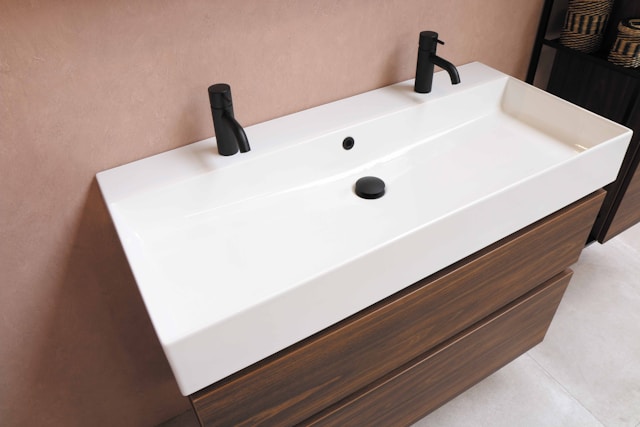Slow-draining sinks are the bane of your life. Water starts filling up, and you worry that it’ll overflow or never go back down. Whether it’s in the bathroom or kitchen, you should never leave a slow-draining sink to fester. Take action to prevent further problems by following these very simple steps:

Unclog It With A Water Bottle
Blockages cause the majority of slow-draining sinks. These could be caused by food or coffee grounds in a kitchen sink, sludge or hair in the bathroom, or who knows what else. Sometimes, the piping gets so old that parts begin to break away and form thick muck that clogs a sink.
Anyway, that’s not strictly important. You don’t need to know what’s clogging your sink; you simply need to get rid of it. While drain unblockers do exist, they use nasty chemicals that aren’t necessary when you can unclog a sink using a water bottle. It’s a straightforward trick that involves placing the bottle over the sink and pumping it to create pressure. This sucks up the blockage and helps your sink drain normally.
Clean The Pipes
If the bottle trick doesn’t work, use any other method to remove sink blockages. Then, pour bleach or natural cleaning solutions down the pipes to give them a thorough clean. Let’s be honest, your kitchen sink is already in need of a deep clean after the festive season, so now’s the perfect time to do it.
Use banking soda and vinegar for a natural pipe-cleaning solution. Combine equal amounts and pour them down the sink, allowing them to rest for 30 minutes. Then, rinse the sink with hot water – it gets rid of any additional much and leaves you with cleaner pipes that are less likely to re-clog.
Prevent It From Re-Clogging
With that in mind, the third (and final) step is to prevent your sink from re-clogging. You can use two excellent tips to do this:
- Clean the pipes every month
- Install a sink strainer
Follow the previous step and clean your pipes every month to prevent sludge from building up. This is the best way to keep the pipes under your sink as clean as possible, and you’ll notice they drain much faster as a result.
Moreover, a sink strainer will fit over the plug hole and collect debris for you. Use them in your kitchen and bathroom to catch things like hair or food, stopping them from going down the drain and clogging it up. Strainers are normally easy to pick up and remove, which lets you dispose of the debris in the bin.
Dealing with a slow-draining sink is a three-part job that focuses on addressing the reason it’s not draining, giving the pipes a good clean, and then stopping any future problems from happening. Keep up with these steps, and you’ll soon have a sink that runs quicker than ever before. Also, apply these tips to your bath or shower plugs, too. They’ll help with slow-draining issues in these areas as well!



